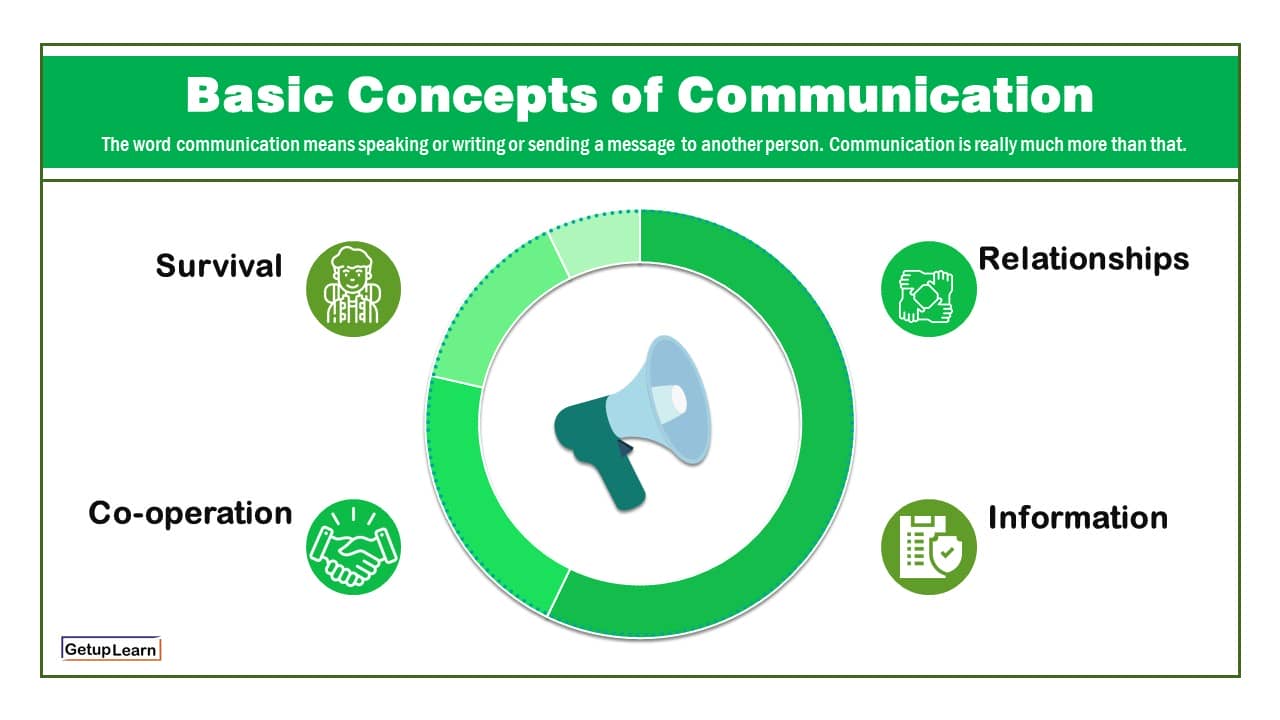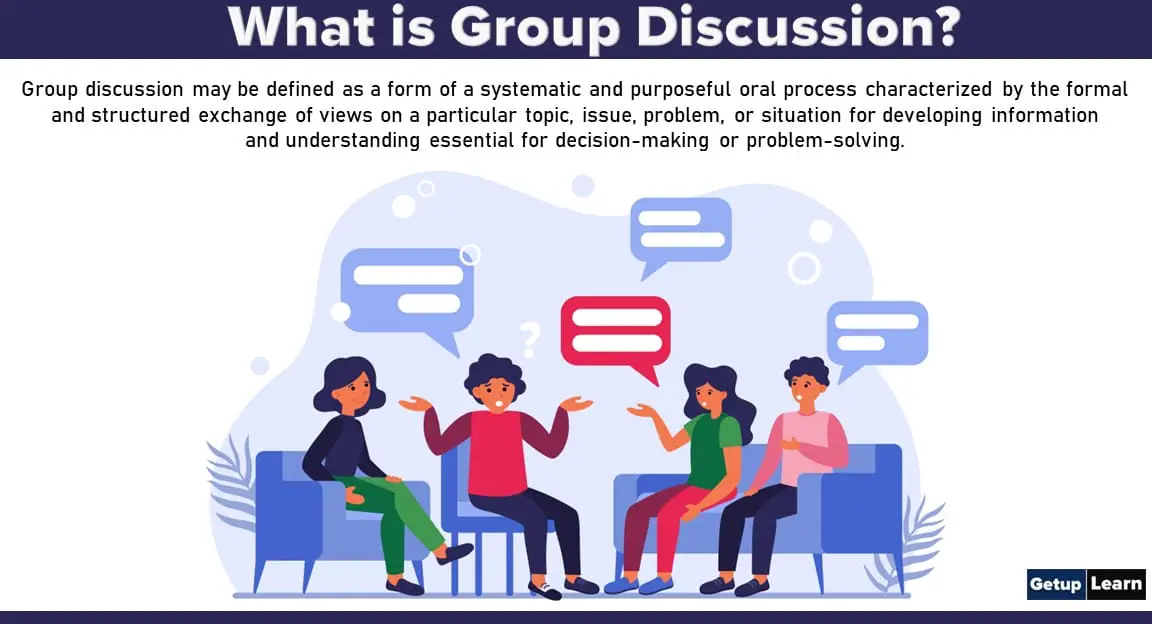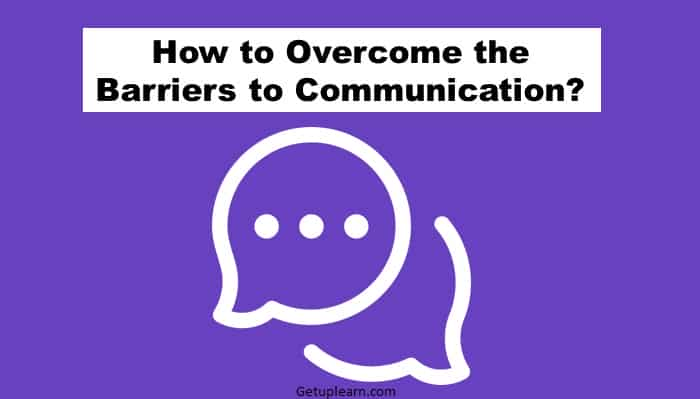Lorem ipsum dolor sit amet, consectetur adipiscing elit. Nunc imperdiet rhoncus arcu non aliquet. Sed tempor mauris a purus porttitor, ac convallis arcu venenatis. Donec lorem erat, ornare in augue at, pharetra cursus mauris.
Status Relationship: Features, Symbols, Problems
Meaning of Status Relations Status relations are distinguished from power and authority relations by the …
10 Steps of Process of Learning
Process of Learning These are the following steps in the process of learning: Stimuli Stimuli …
8 Personality Dimensions: Assessment Tests
Personality is a set of relatively stable characteristics or dimensions of people that account for …

10 Best English Grammar Courses Online & Certification [2023]
The English language, in all its intricacies, plays a pivotal role in our daily communication …

Best Communication Skills Courses
In an increasingly interconnected world, proficient communication skills have become an imperative tool for success …

8 Basic Concepts of Communication
What are the Concepts of Communication? The word communication means speaking or writing or sending …

Group Discussion: Features, Elements, Types, Process, Characteristics, Roles, Group
What is Group Discussion? Group discussion may be defined as a form of a systematic …
Data and Information: Definition, Characteristics, Types, Channels, Approaches
Computer System: Definition, Characteristics, Functional Units, 6 Components
Explore All Content Here
Human Resource Management
[su_spoiler title=”Human Resource Management” style=”fancy” icon=”plus-circle”]
- What is Human Resource Management?
- Human Resource Planning
- Factors Affecting Human Resource Planning
- Job Analysis
- Job Description
- Job Design in Hrm
- Types of Business Environment
- What is Recruitment?
- Selection in Hrm
- Training in Hrm
- Types of Training in Hrm
- Performance Appraisal
- Process of Performance Appraisal
- Social Audit
- Employee Welfare
- Objectives of Planning
- Limitations of Planning
- Decision-Making Process
- Management by Objectives
- Features of MBO
- Process of MBO
- Limitations of MBO
- Strategic Planning Process
- What is Benchmarking?
- 6 Elements of Scientific Management
- 11 Major Significance of Performance Appraisal
- Types of Welfare Measures
- Employee Safety
- Counselling and Mentoring
- Motivation in Hrm
- Theories of Motivation
- Wage Incentives
- Human Resources Records
- Fringe Benefits
- What is HRIS?
- HRIS: Objectives, Functions
- Human Resource Accounting
- Human Resource Audit
- Human Resource Development
- Principles in Designing HRD System
- Roles of HR Manager
- Functions of HRM
- 5 Approaches of HRM
- Objectives of HRM
- Human Resource Management Practices in India
- HRM in the New Millennium
- 9 Need for Human Resource Planning
- 11 Uses of Performance Appraisals
- Social Orientations of Business: Factors
- Scope of Control in Management
- 8 Features of Scientific Management
- Channels of Distribution
- Importance of Human Resource Planning
- 7 Factors Affecting HRP
- Methods of Human Resource Planning
- Uses of Job Analysis Information in HRM
- Components of Job Description
- Methods of Job Design
- What is Promotion?
- Transfer in HRM
- Separation in HRM
- Ranking Method of Job Evaluation
- Job Evaluation
- 12 Steps of Selection Process
- Job Demotion
- 8 Characteristics of an Effective Appraisal System
- 6 Approaches to Job Design
- Departmentalization in Management
- 5 Elements of Organizing in Management
- What is Organization?
- 12 Principles of Organizing
- 9 Importance of Organization
- 11 Principles of Organization
- Methods of External Sources of Recruitment
- 14 Importance of Controlling
- What is Controlling?
- Methods of Job Evaluation
[/su_spoiler]
Communication
[su_spoiler title=”Communication” style=”fancy” icon=”plus-circle”]
- What is Communication?
- Elements of Communication
- 7 Principles of Communication
- Types of Communication
- Nonverbal Communication
- Written Communication
- Verbal Communication
- Organizational Communication
- Oral Communication
- Business Communication
- Mass Communication
- Interpersonal Communication
- Development Communication
- Barriers to Communication
- Downward Communication
- Formal Communication
- Upward Communication
- Horizontal or Lateral Communication
- Difference Between Oral and Written Communication
- Informal Communication
- Effective Communication
- What are Theories of Communication?
- Self Development
- Advantages and Disadvantages of Oral Communication
- Media of Communication
- 7 Types of Barriers of Communication
- 17 Ways to Overcome Barriers to Communication
- 8 Functions of Mass communication
- 8 Elements of Mass Communication
- 10 Characteristics of Mass Communication
- Scope of Business Communication
- Human Communication
- Impact of Digital Media
- Models of Communication
- Theories of Mass Communication
- Essentials of Business Communication
- Art of Persuasion
- Business Letter Writing
- Layout of Business Letter
- Communication Network
- Group Communication
- Cross Cultural Communication
- Group Discussion
- 8 Basic Concepts of Communication
- Barriers of Communication
- How to Overcome the Barriers to Communication?
- Best Communication Skills Courses
- 10 Best English Grammar
- 8 Personality Dimensions
- 10 Steps of Process of Learning
- Status Relationship
[/su_spoiler]
Management
[su_spoiler title=”Management” style=”fancy” icon=”plus-circle”]
- What is Management?
- Why do We Study Management?
- History of Management
- Planning in Management
- Planning Process
- Scientific Management
- 8 Techniques of Scientific Management
- General Principles of Management
- 8 Types of Decisions
- What is Directing?
- 5 Types of Managerial Decisions
- What is Organizing?
- 5 Process of Organizing
- 6 Nature of Organizing
- 6 Approaches to Job Design
- Departmentalization in Management
- 5 Elements of Organizing in Management
- 6 Process of Organization
- What is Organization?
- 12 Principles of Organizing
- 9 Importance of Organization
- 11 Principles of Organization
- Organizational Structure
- 22 Key Principles of Organizations
- 16 Benefits of Organizations
- Formal Organisation
- Importance of Planning
- Importance of Organising
- 9 Steps of Staffing Process
- Nature of Staffing
- What is Staffing Process?
- Importance of Directing
- What is Coordinating?
- Functions of Management
- Methods of External Sources of Recruitment
- 14 Importance of Controlling
- What is Controlling?
- Process of Controlling
- Effective Control System
- Advantages of Controlling in Management
- Techniques of Controlling in Management
- 13 Characteristics of Coordination
- What is Coordination?
- 6 Principles of Coordination
- Importance of Coordination
- 13 Methods of Coordination
- Techniques of Coordination
- Henri Fayol 14 Principles of Management
- 7 Techniques of Scientific Management
- 4 Approaches to Management
- Bureaucratic Approach to Management
- Administrative Approach to Management.
- 7 Classical Theory of Management
- Principles of Scientific Management
- Behavioural Approach
- Evolution of Management Theory
- Systems Approach to Management
- Human Relations Approach to Management
- Contingency Approach to Management
- Types of Plans
- Process of Planning
- Nature of Planning
- Objectives of Planning
- Limitations of Planning
- Decision-Making Process
- Management by Objectives
- Features of MBO
- Process of MBO
- Limitations of MBO
- Strategic Planning Process
- Project Management
- Project Management Life Cycle
- Project: Definition, 11 Characteristics, Features, Process
- Product: Definition, Concept, Levels, Hierarchy, Product Lines
[/su_spoiler]
Organizational Behavior
[su_spoiler title=”Organizational Behavior” style=”fancy” icon=”plus-circle”]
- What is Organizational Behavior?
- Concept of Organizational Behavior
- 7 Determinants of Organizational Behavior
- Limitations of Organizational Behavior
- 6 Features of Organization
- 8 Disciplines Contributing to Organizational Behavior
- 11 Factors Affecting Organisational Behaviour
- 8 Nature of Organizational Behavior
- Operant Conditioning
- 7 Major Dimensions of Societal Culture
- Factors Affecting Organizational Culture
- Organizational Culture
- Organizational Culture
- Organizational Change
- 12 Ways to Managing Resistance to Change
- Effective Implementation of Change in Organizations
- Resistance to Change
- Why People Resist Change?
- Why Do People Resist Change?
- Steps of Planned Change Process
- 7 Types of Organizational Change
- Types of Organizational Change
- 5 Classical Viewpoint of Human Behavior
- Significance of Organization
- Models of Organizational Behavior
- Individual Behavior and Foundations
- What is Learning?
- Perception in Organisational Behavior
- Attitude in Organisational Behaviour
- 4 Theories of Motivation in Organisational Behaviour
- Motivation in Organisational Behaviour
- Job Satisfaction
- What is a Group?
- Group Formation
- Group Behavior in Organizations
- Group Cohesiveness
- Understanding Group Productivity
- What is Power in Politics?
- Difference Between Positional Power and Personal Power
- Organizational Politics
- What is Leadership?
- Organizational Conflict
- Conflict Process
- What is Negotiation?
- Intergroup Relations
- Organizational Development
- OD Interventions
- Team Building Interventions
- Types of Personality
- Total Quality Management
- What is Stress?
- How to Manage Stress?
- Role Analysis Technique
- Job Redesigning
- Transformational Leadership
- 7 Important Characteristics of Group
- Formal Groups: 7 Types
- How Groups Make Decisions?
- Analysis of Transactions
- Process of Conflict
- What is Creativity?
- Power and Politics in Organizations
- Resistance to Change in Organization
- Theories of Organizational Climate
- Uncertainty Reduction
- Power Tactics and Strategy in an Organization
- 6 Major Limits of Authority in Organizations
- Status Relationship
[/su_spoiler]
Sales Management
[su_spoiler title=”Sales Management” style=”fancy” icon=”plus-circle”]
- Roles of Sales Force and Tasks
- Sales Management
- Production Management
- Process Design
- Automation and History
- Types of Salespeople
- Supply Chain Management
- Bullwhip Effect
- Personal Selling
- Selling Process
- 6 Major Functions of Staffing
- Functions of Sales Management
- Determinants of Market Demand
- Sales Manager
- Sales Plan and Promotion
- Sales Organization
- Line Sales Organization Structure
- What is Sales Planning?
- What is Sales Budgeting?
- Advantages and Disadvantages of Sales Budget
- 5 Limitations in Sales Budgeting
- Sales Forecasting
- Process of Sales Forecasting
- 10 Techniques of Sales Forecasting
- What is Sales Quota?
- Sales Territory
- Sales Control
- Sales Audit
- Sales Analysis
- Marketing Cost Analysis
- 8 Stages of Procurement Life Cycle
- Procurement Management
- What is Compensation?
- Motivating Sales Force
- 11 Best Motivation Strategies
- Performance Evaluation
- Marketing Channels
- Channel Intermediaries
- What is Retailing?
- Types of Retailers on Bases of Different Factors
- What is Wholesaling?
- What is Franchise?
- Channel Control
- Channel Conflict
- Channel Information System
- Physical Distribution
- 13 Types of Inventory
- What is Warehousing?
- Material Handling
- What is Transportation?
- Order Processing
- Order Processing Systems
- What is Inventory?
- Importance of Sales Management Information System
- Role of E-Commerce in Selling
- 6 Challenges of International Business
- 4 Types of Marketing Channels
- Channel Motivation and Channel Power to Motivate
- Channel Evaluation
- 10 Elements of Channel Information System
- 3 Types of Wholesalers
- 8 Functions of Wholesalers
- Classification of Retailing Firms
- Retail Industry in India
- 7 Elements of Logistics Management
- Advantages of ERP in Supply Chain Management
- What is Benchmarking?
- Manufacturer Based Channel Formats
- 7 Distribution Requirements
- 15 Importance of Warehousing in Logistics Trends
- 5 Features of Coordination Schemes
- 6 Steps of Marketing Research Process
- 5 Major Principles of Distribution Research
- 7 Challenges of Successful Channel Partnership
[/su_spoiler]
Business Environment
[su_spoiler title=”Business Environment” style=”fancy” icon=”plus-circle”]
- Social Responsibility of Business
- Business Environment
- Labour Environment
- Environmental Factors Affecting Business
- Problems of Growth in Business Environment
- Financial Environment
- Economic Environment
- Small Enterprise or Small scale Industries
- Environmental Issues Related to Business
- Economic Planning
- Industrial Policies
- Patents and Trademarks
- Multinational Corporations (MNCs)
- Natural and Technological Environment
- Introduction to Industrial Sickness
- International Business
- Introduction to Economic Development In India
- Environmental Scanning
- What is Social Audit?
- Environmental Screening
- Introduction to Inflation
- Legal Environment
- Corporate Governance
- Socio-cultural Environment
- Workers Participation in Management
- Service Sector in Business Environment
- Business Ethics and Values
- Economic Systems
- Scope of Business Communication
[/su_spoiler]
Marketing Management
[su_spoiler title=”Marketing Management” style=”fancy” icon=”plus-circle”]
- Social Audit
- Introduction to Marketing Management
- Introduction to Marketing
- What is Marketing?
- Marketing Management
- Types of Demand in Marketing
- Nature of Marketing
- Objectives of Marketing Management
- Marketing Research
- Process of Marketing Research
- Types of Marketing Research
- Consumer Behaviour
- Functions of Marketing
- Meta Market
- Types of Markets in Marketing
- Marketing Mix
- Product Mix in Marketing
- Price Mix in Marketing
- Promotion Mix in Marketing
- Place Mix in Marketing
- 5 Steps of Marketing Mix Process
- Marketing Environment
- Demand Measurement
- 3 Factors Influencing Consumer Behaviour
- 5 Stages of Buying Process
- Micro and Macro Environment in Marketing Management
- Types of Market Segmentation
- Product Positioning
- What is a Product?
- Product Life Cycle
- Stages of Product Life Cycle
- New Product Development
- New Product Development Process
- What is a Brand?
- Brand Personality
- What is CRM?
- Customer Orientation
- Benefits of CRM
- Future of CRM
- CRM in Banking
- What is MIS?
- Characteristics of MIS
- Information System
- Business Market
- Marketing and Customer Value
- Strategic Planning Process
- Marketing Planning Process
- Factors Affecting Pricing Decisions
- Departmentalization in Management
- 5 Elements of Organizing in Management
- International Marketing
- Trends in International Marketing in India
- Benefits of International Marketing
- Importance of International Marketing
- What is Exporting?
- 5 Stages of Internationalization
- Objectives of Planning
- Limitations of Planning
- Decision-Making Process
- Management by Objectives
- Features of MBO
- Process of MBO
- Limitations of MBO
- Strategic Planning Process
[/su_spoiler]
Entrepreneurship
[su_spoiler title=”Entrepreneurship” style=”fancy” icon=”plus-circle”]
- What is Entrepreneurship?
- 17 Main Characteristics of Entrepreneurship
- What is an Entrepreneur?
- 10 Main Factors Affecting Entrepreneurial Growth
- Essential Traits: 14 Characteristics of Entrepreneur
- 5 Important Functions of an Entrepreneur
- 16 Important Keys of Traits of Entrepreneurs
- 21 Major Types of Entrepreneurs
- 5 Stages of Process of Entrepreneurship
- Entrepreneurial Culture
- 3 Major Theories of Entrepreneurship
- Entrepreneurial Venture
- Entrepreneurial Environment
- 10 Problems of Entrepreneurship in Modern Business
- Financial Planning in Entrepreneurship
- Social Entrepreneurship
- Women Entrepreneurship
- 8 Government Schemes for Women Entrepreneurs in India
- How To Get Startup Ideas?
- Project Management in Entrepreneurship
- Project Feasibility Analysis
- Project Report: Contents
- 14 Steps Taken for Development of Entrepreneurship
- 10 Role of Government in Promoting Entrepreneurship
- Incentives in Entrepreneurship
- National Policy on Skill Development NSPD
- District Industry Centre
- Entrepreneur and Enterprise
- 6 Difference Between Entrepreneur and Manager
- Top 11 Qualities of an Entrepreneur
- 10 Major Activities of Marketing
- 5 Important Features of Entrepreneurship
- 8 Entrepreneurial Traits
- 9 Important Benefits of Entrepreneurship
- 13 Major Limitations of Entrepreneurship
- 10 Approaches and Strategies of EDP
- 11 Cultural Diversity of Entrepreneurship
- 6 Keys to Managing Pitfalls of Entrepreneurship
- 13 Major Characteristics of an Entrepreneur
- 7 Role of Entrepreneur in Economic Development
- 15 Personality Traits of an Entrepreneur
- 5 Types of Entrepreneurs Based on Business
- Difference Between Entrepreneur and Professional Manager
- Steps in Selection of New Career
- 14 Problems Faced by Women Entrepreneurs
- Women Entrepreneurs
- Entrepreneurial Behavior
- 17 Reasons for Promoting Entrepreneurship
- 5 Needs of Maslow Need Hierarchy Theory
- 6 Process of Entrepreneurship Development Program
- Criteria of Performance Entrepreneur
- Problems of EDPs
- 8 Suggestions to Make EDPs Successful
- Characteristics of a Project
- Objectives of a Project
- Classification of Projects and Importance
- 8 Stages of Project Report
- What is Project Appraisal?
- Social Cost Benefit Analysis
- 7 Steps of Management Planning Process
- Small Scale Industrial
- 10 Importance of Small Scale Industries
- 15 Problems of Small Scale Industries
- Elements of TQM
- Stages of Entrepreneurial Process
- 9 Major Role of Entrepreneurs
- 10 Reasons for Entrepreneurial Failure
- 7 Possible Organizational Stakeholders
- 15 Importance of Entrepreneurial Environment
- Relationship Between Entrepreneurship and Environment
- 15 Qualities of a Successful Entrepreneur
- Course Contents and Curriculum of EDPs
- 4 Barriers to Women Entrepreneurs
- 6 Ways to Promoting Women Entrepreneurship
- 9 Characteristics of Small Scale Business
- Problems Faced by Small Business
- Business Organization
- Sole Proprietorship
- What is Partnership?
- Joint Stock Company
- What is Franchising?
- 5 Responsibilities of Office Management
- 5 Major Functions of Modern Office
- Profit Planning and Process
- Functions of Office Management
- Behavioral Theories of Leadership
- Importance of Communication in Business
- Marketing Challenges of Small Scale Industries
- Pricing Policy
- Channels of Distribution
- Advertising
- Industrial Sickness
- National Small Industries Corporation (NSIC)
- History Entrepreneurial Growth in India
- Different Views on Entrepreneurship by Scholars
- Family Business
- Venture Capital
- Socio-Personal Characteristics
- Human Resource Factors in Entrepreneur
- Training in Entrepreneurship
- Target Group
- 20 Personal Qualities of Entrepreneurs
- Questions To Ask an Entrepreneur and Answers
- Problems Faced by Women Entrepreneurs in India
- Business Ethics
- Theories of Business Ethics
- 23 Important Principles of Business Ethics
- Corporate Governance
- Corporate Social Responsibility (CSR)
- Advantages and Disadvantages of Being an Entrepreneur
- Importance of Entrepreneurship Development Programme
- Small Scale Industries
[/su_spoiler]
Financial Management
[su_spoiler title=”Financial Management” style=”fancy” icon=”plus-circle”]
- Functions of Financial Management
- Financial Management
- Scope of Financial Management
- 10 Nature of Financial Management
- Field of Finance
- Characteristics of Financial Management
- Functions of A Finance Manager
- Mergers and Acquisitions
- Financial Forecasting
- Financial Planning
- Balance Sheet and Profit and Loss Account
- Financial Documents
- Time Value of Money
- Break Even Analysis
- Ratio Analysis
- Fund Flow Statement
- Cash Flow Statement
- Dividend Policy
- Cost of Capital
- Retained Earnings
- Equity Shares and Preference Shares
- What is Debenture?
- Capital Budgeting
- Factors Affecting Cash Requirements
- Cash Management
- What is Cash?
- What is Capitalization?
- Capital Structure
- 24 Major Characteristics of Financial Plan
- Theories of Capital Structure
- Leverage in Financial Management
- Working Capital
- 8 Cash Forecasting Method of Working Capital
- 6 Methods of Forecasting Working Capital
- Inventory Management
- Dividend Decisions
- 13 Importance of Ratio Analysis and Limitation
- Application of Funds
- Interpretation of Ratios
- Financial Problems of Merger and Acquisition
- Participants in Foreign Exchange Market
- 9 Types of Debentures
- 9 Objectives of Ratio Analysis and Limitations
- 6 Importance of Capital Budgeting
- Factors Determining Capital Structure
- 12 Main Factors of Working Capital
- 11 Main Need for Working Capital
- What is Inventory?
- Earnings Management
- Money Market
- Treasury Bills Market
- Commercial Paper Market
- What is Budgeting?
- 5 Main Steps of Capital Budgeting Process
- Evaluation of Investment Proposals
- MM Hypothesis
- Security Required in Bank Finance
- Features of Ordinary Shares
- 9 Features of Preference Shares
- Foreign Exchange Market
- Securitization
- 10 Main Sources of Finance
- 7 Types of Working Capital
- 27 Factors Determining Working Capital
- 7 Main Components of Financial Policy
- 8 Main Issues of Corporate Governance
- Debt Covenant
- 4 Main Influence of Credit Policy
- 6 Main Investment in Marketable Securities
- 11 Major Need of Capital Budgeting
- 12 Major Determinants of Dividend Policy
- What is Leasing?
- 4 Important Significance of Cost of Capital
- Factors Determining Working Capital Requirements
- Financial Services
- Characteristics of Financial Services
- 11 Importance of Financial Services
- 15 Main Scope of Financial Services
- Financial Innovation
- 30 Innovative Financial Instruments
- Financial Services Sector
- What is Investment?
- 12 Significance of Financial Management
- Overcapitalization and Undercapitalization
- Advantages and Disadvantages of Equity Shares Capital
- Advantages and Disadvantages of Preference Shares
- Advantages and Disadvantages of Debentures
- Bonus Issues of Shares
- Public Deposits
- 21 Determinants of Working Capital Requirements
- 10 Main Sources of Working Capital
- 6 Need for Capital Budgeting
- Export Documents
- Derivatives Securities
- Forward Contract
- Futures Contracts
- Futures Markets
- What is Hedging?
- Interest Rates Futures
- Swap Market
- Options in Finance
- What is Option Payoff?
- Currency Options
- 11 New Financial Products and Services
- What is Insurance?
- 20 Characteristics of Insurance
- 11 Types of Insurance
- What is a Bank?
- 8 Difference Between Bill of Exchange
- Negotiable Instruments Act 1881
- What is Endorsement?
- Holder in Due Course and Privileges
- 7 Main Functions of Insurance
- Differences Between Insurance and Wagering Contracts
- 16 Main Importance of Insurance
- 17 Kinds of Insurance
- What is Reinsurance?
- Life Insurance
- Insurance Contract
- Bank: Origin, Definition, Features, Principles, Types
- Functions of Commercial Banks
- Unit Banking System
- Branch Banking
- Bank Management
- Bank Deposit Management
- Deposit Mobilization
- Loan Management System
- Bank Account and Types
- Accounting and Auditing
- What is Money?
- Functions of Money
- Supply of Money
- Rate of Interest
- Loanable Funds Theory
- Certificate of Deposit
- Money Market in India
- 15 Types of Banks on Bases of Ownership
- 9 Characteristics of Bank
- Central Bank
- Monetary Policy
- 7 Role of Commercial Bank in Economic Development
- International Trade
- EXIM Policy: 1997 to 2002 and 2002 to 2007
- WTO: Meaning, Objectives, Advantages and Disadvantages
- Risk Management in Banks
- 8 Objectives of Financial Management
- 3 Major Financial Decisions
- 6 Sources of Risk
- 7 Factors Affecting the Working Capital
[/su_spoiler]
Computer Science
[su_spoiler title=”Computer Science” style=”fancy” icon=”plus-circle”]
- What is Computer System?
- 10 Types of Computers
- What is Microprocessor?
- Types of Computer Memory
- What is Data and Information?
- What is Operating System?
- Types of Operating System
- What is Artificial Intelligence?
- What is Big Data?
- Characteristics of Big Data
- Types of Computer Software
- What is Problem Solving Algorithm?
- What is Cloud Computing?
- What is Debugging?
- Types of Storage Devices
- 10 Evolution of Computing Machine
- What is Generation Computer?
- Functions of Operating Systems
- Advantages and Disadvantages of Operating System
- Data Representation in Computer
- What is Flowchart in Programming?
- Advantages and Disadvantages of Flowcharts
- C++ Character Set
- What are C++ Keywords?
- Data Types in C++
- What are Operators in C?
- What are Expressions in C?
- Decision Making Statements in C
[/su_spoiler]
Journalism
[su_spoiler title=”Journalism” style=”fancy” icon=”plus-circle”]
- What is Communication?
- Elements of Communication
- Types of Communication
- Functions of Communication
- What is Mass Madia?
- Functions of Mass Media with Examples
- Characteristics of Newspapers
- Media Organisations in India
- What is News Editing?
- Writing for Magazine
- Characteristics of Magazines
- Difference between Newspaper and Magazine
- How to Structure Magazine Article
- Magazine Writing Styles
- Types of Magazines
- Types of Radio Broadcasting
- What is the History of Radio?
- Qualities of a Technical Writer
- Process of Technical Writing
- Evolution of Technical Writing
- Scope of Technical Writing
- What is Technical Writing?
- Five Steps to Successful Writing
- What is Advertising?
- Functions of Advertising
- Features of Advertising
- Importance of Advertising
- Role of Advertising
- History of Advertising in India
[/su_spoiler]
Anthropology
[su_spoiler title=”Anthropology” style=”fancy” icon=”plus-circle”]
- What is Anthropology?
- Nature of Anthropology
- Main Branches of Anthropology
- Social Cultural Anthropology
- What is Biological Anthropology?
- History of Biological Anthropology
- What is Social Anthropology?
- Definition of Social Anthropology
- Scope of Social Anthropology
- Nature of Social Anthropology
- Theories in Sociocultural Anthropology
- What is Archaeology?
- Process of Archaeology
- Types of Archaeological Sites
- What is Linguistic Anthropology?
- Definition of Marriage
- Definition of Family
- Definition of Kinship
- Types of Family in Sociology
- Types of Marriages
- Types of Kinship Groups
- What is Folkloristic Anthropology?
[/su_spoiler]
Consumer Behavior
[su_spoiler title=”Consumer Behavior” style=”fancy” icon=”plus-circle”]
- What is Consumer Behaviour?
- 3 Factors Influencing Consumer Behaviour
- 5 Stages of Buying Process
- Micro and Macro Environment in Marketing Management
- Types of Market Segmentation
- Product Positioning
- What is a Product?
- Product Life Cycle
- Stages of Product Life Cycle
- New Product Development
- New Product Development Process
- What is a Brand?
- What is Brand Personality?
- What is CRM?
- Customer Orientation
- Benefits of CRM
- Future of CRM
- What is MIS?
- Characteristics of MIS
- Information System
- Business Market
- Marketing and Customer Value
- Factors Affecting Pricing Decisions
- What is the Meaning of Price?
- What is Data Collection?
[/su_spoiler]
Insurance
[su_spoiler title=”Insurance” style=”fancy” icon=”plus-circle”]
- What is Insurance?
- 20 Characteristics of Insurance
- 11 Types of Insurance
- What is a Bank?
- 8 Difference Between Bill of Exchange and Promissory Note
- Negotiable Instruments Act 1881
- What is Endorsement?
- Holder in Due Course and Privileges
- 7 Main Functions of Insurance
- Differences Between Insurance and Wagering Contracts
- 16 Main Importance of Insurance
- 17 Kinds of Insurance
- What is Reinsurance?
- Life Insurance
- Insurance Contract
- What is a Bank?
- Functions of Commercial Banks
- Unit Banking System
- Branch Banking
- Bank Management
- Bank Deposit Management
- Deposit Mobilization
- Loan Management System
- Bank Account and Types
- Accounting and Auditing
[/su_spoiler]
Economy
[su_spoiler title=”Economy” style=”fancy” icon=”plus-circle”]
- What is Money?
- Functions of Money
- What is Supply of Money?
- What is Rate of Interest?
- Loanable Funds Theory
- Certificate of Deposit
- Money Market in India
- 15 Types of Banks on Bases of Ownership
- 9 Characteristics of Bank
- What is Central Bank?
- What is Monetary Policy?
- 7 Role of Commercial Bank in Economic Development
- International Trade
- EXIM Policy: 1997 to 2002 and 2002 to 2007
- What is WTO?
- Risk Management in Banks
- Asset Liability Management ALM
- Barter System
- 9 Limitations of Credit Creation
- Term Structure of Interest Rates in India
- Functions of Commercial Banks
- Nationalization of Commercial Banks
- Production Management: Product Design
- Process Design
- Automation and History
- Types of Salespeople
- Supply Chain Management
- Bullwhip Effect
- Organizational Behavior
- Concept of Organizational Behavior
- 7 Determinants of Organizational Behavior
- 4 Major Limitations of Organizational Behavior
- 6 Features of Organization
- 11 Factors Affecting Organisational Behaviour
- 8 Nature of Organizational Behavior
- Operant Conditioning
- 7 Major Dimensions of Societal Culture
- Factors Affecting Organizational Culture
- Organizational Culture
- Organizational Change
- 12 Ways to Managing Resistance to Change
- Effective Implementation of Change in Organizations
- Resistance to Change
- Why People Resist Change?
- 5 Major Steps of Planned Change Process
- 7 Types of Organizational Change
- 10 Different Types of Organizational Change
- 5 Classical Viewpoint of Human Behavior
- Significance of Organization
- 5 Major Models of Organizational Behavior
- Individual Behavior and Foundations
- What is Learning?
- Perception in Organisational Behavior
- Attitude in Organisational Behaviour
- 4 Theories of Motivation in Organisational Behaviour
- Motivation in Organisational Behaviour
- Job Satisfaction
- What is a Group?
- Group Formation
- Group Behavior in Organizations
- Group Cohesiveness
- Understanding Group Productivity
- What is Power in Politics?
- Difference Between Positional Power and Personal Power
- Organizational Politics
- What is Leadership?
- Organizational Conflict
- Conflict Process
- What is Negotiation?
- Intergroup Relations
- Organizational Development
- OD Interventions
- Team Building Interventions
- Types of Personality
- Total Quality Management
- What is Stress?
- How to Manage Stress?
- Role Analysis Technique
- Job Redesigning
- Transformational Leadership
- 7 Important Characteristics of Group
- Formal Groups: 7 Types
- How Groups Make Decisions?
- Analysis of Transactions
- Process of Conflict
- What is Creativity?
- Power and Politics in Organizations
- Resistance to Change in Organization
- Theories of Organizational Climate
- Uncertainty Reduction
- Power Tactics and Strategy in an Organization
- 6 Major Limits of Authority in Organizations
- Status Relationship
- Channels of Distribution
[/su_spoiler]


